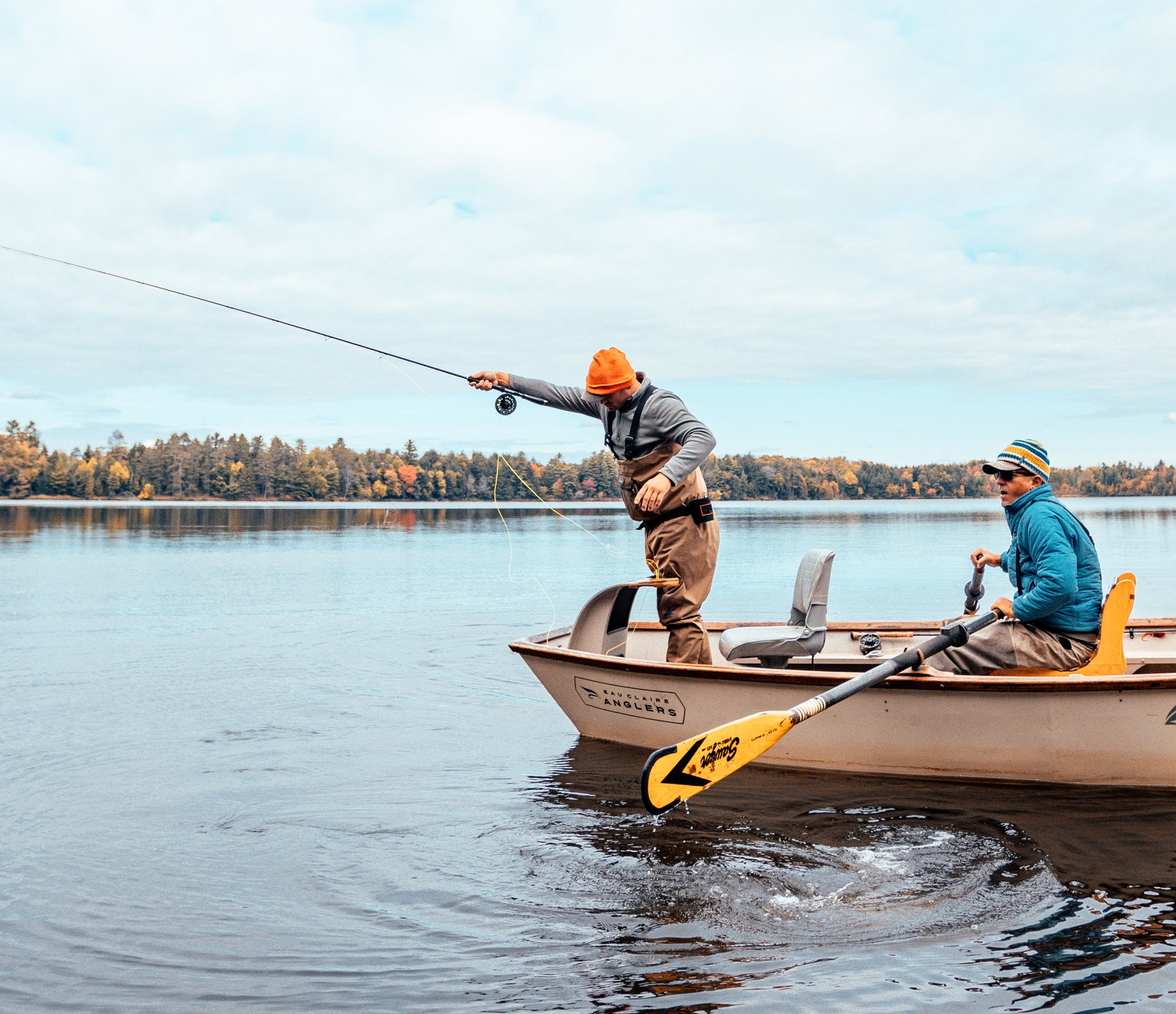Article Written by Stephen Wisner. Learn More About Stephen Wisner Below / Article Read Time: 3 Minutes
Fall Musky fishing can produce some of the top Apex Predators within freshwater ecosystems as they are bulking up for the winter and are often looking for a decent sized meal. The water starts to get cooler, the muskies behavior is starting to change, giving anglers the advantage of a more opportunistic fish, especially with larger flies. Because I’m on the water from early September till mid-November, I understand the way fish respond to the large seasonal changes and the changes created by weather fronts. Our muskies don’t just change location based on time of day or specific weather conditions, they also make large migratory changes throughout the fall between summer habitat and wintering water. Understanding these movements and being able to adjust tactics is important for catching muskies consistently throughout the season. I’ve come to understand the importance of having a variety of fly lines with different sink rates on-hand to make changing fly size, retrieve speed and depth possible.

Most musky flies have little to no weight to get them down. We rely on the sink rate of the line to put our flies where we want them to hunt. At first glance, choosing the right sink rate would seem easy; bigger, more buoyant flies need faster sink rates as would deeper water. However, when you add current and retrieve speed into the mix, this becomes more difficult. A fast retrieve in fast water requires a faster sink rate than a slower retrieve in slower water to fish at the same depth. Change to a more buoyant fly and suddenly you’ve thrown a wrench in the works. If you keep the same line, you’ll either have to speed up or slow down your retrieve in order to fish the same depth, a situation that doesn’t lend itself to precise fishing.

The solution is to have a variety of sink rates available so you can change your line rather than make unwanted adjustments to your speed of retrieve. For instance, if you want to fish deeper water, but maintain a fast retrieve, simply switch to a line with a faster sink rate, Having several sink rates available means that your fly choice, depth and speed are all customizable and you can experiment until you find the combination that triggers a response from fish. In a river environment, this also allows you to switch from faster shallower water to deeper slow water and not be forced to change retrieve speeds or fly size just because the water is moving faster or slower.

Cortland makes the Pike Musky series lines in Floating, Intermediate, Sink 4 and Sink 8 options. For fall musky fishing, I don’t have much use for a floating line, but the other three sink rates are great to have onboard. I frequently find myself switching between the Intermediate and Sink 8 throughout the day as conditions and techniques dictate. These lines have also proven to be extremely durable and handle well in the temperature extremes we encounter in Wisconsin during the fall.

Fall is a time of transition with frequent changes in water levels, temperatures and barometric pressure. Musky respond by changing their location. In addition, these changes make them more or less active, often with big swings over the course of a day. Most anglers will carry a variety of flies to respond to these changes, but in my opinion, they would be wise to also carry a variety of fly lines with different sink rates. This allows for the kind of control consistently successful anglers require. With a combination of flies and lines, an angler can fish any speed at any depth with any fly. The ability to accurately change tactics with changing conditions is what puts fish in the net regularly. Fall is prime time for the musky fly angler, but it is also a time of transition and movement for muskies. Being able to adapt to those movements is essential and having a variety of lines is the way to do it.

About the author
Stephen Wisner is the owner and head guide at Eau Claire Anglers, a fly fishing specific guiding company specializing in river float trips for Smallmouth Bass and Muskies in Northwestern Wisconsin. He guides some of the best known musky rivers in the United States as well as some lesser known, but very special rivers with solid musky populations. Over the years he has guided anglers from all over the country and has put hundreds of muskies in the net. While muskies can be caught throughout the season, fall is really prime time as musky metabolisms kick into high gear and the fish begin to feed in earnest before the coming winter. It is also a time with big weather changes and the need to be able to change tactics depending on conditions.
Products mentioned in this article:
Pike Musky FloatPike Musky Intermediate
Pike Musky Sink 4
Pike Musky Sink 8


